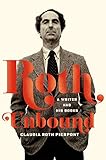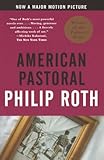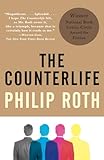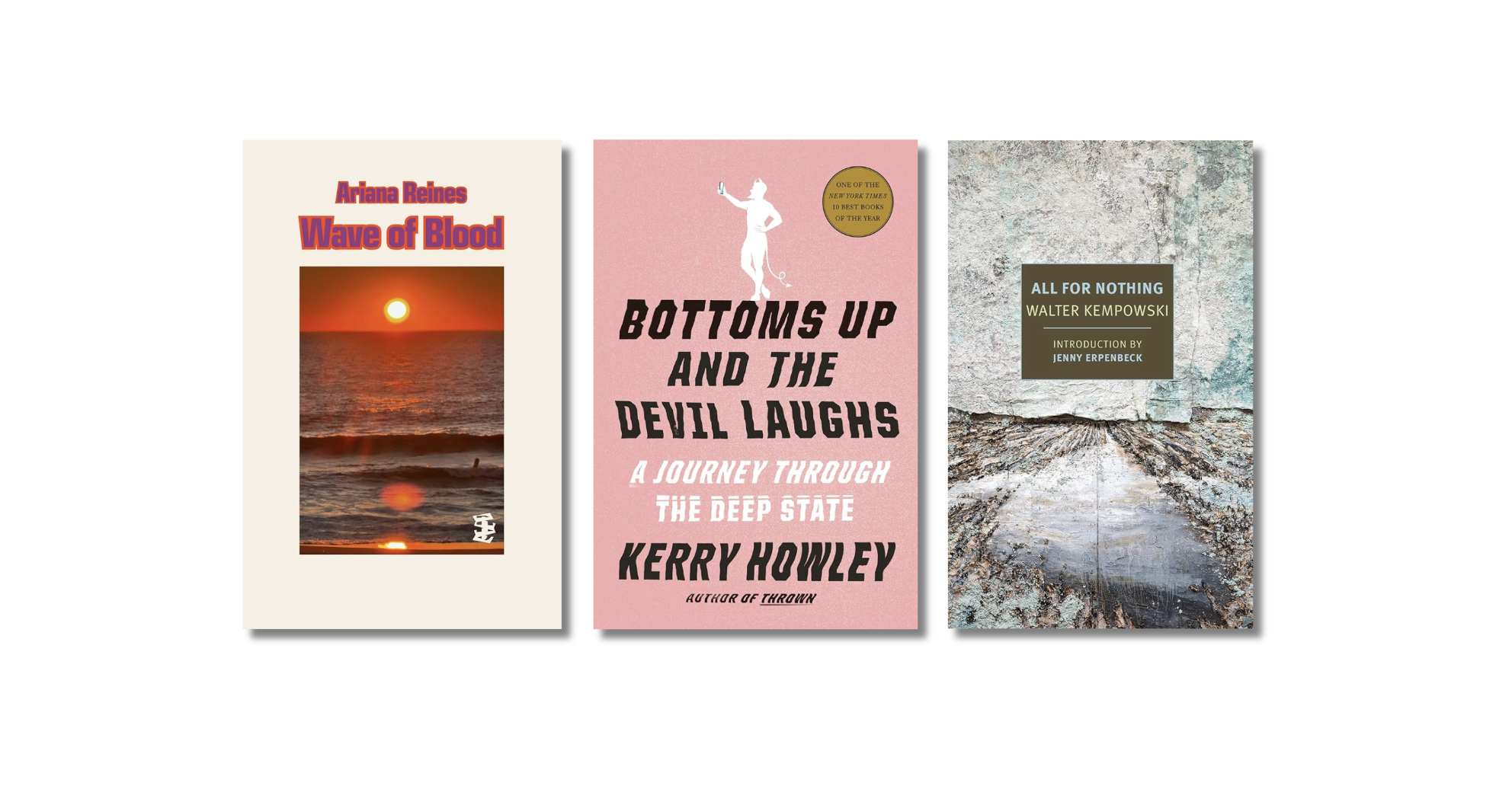 I went to college in the late nineties, when any mention of Philip Roth was prefaced with the label “misogynist.” As a result, I did not read him until I was out of school and attempting to catch up on contemporary fiction. I read Portnoy’s Complaint and Goodbye, Columbus back-to-back, expecting to be at least mildly shocked by the subject of these two controversial-in-their-time books. Instead I was more startled by the difference in tone; Portnoy’s barreling comic monologue seemed to have nothing in common with the traditional realism of Goodbye, Columbus. How could this even be the same writer? I decided I had to read more Roth, misogynist or not, and I’ve been reading him ever since. I tend to go on Roth binges, reading three or four of his books in a row. Eventually I get worn out (his books, at least for me, require a lot of concentration) and I take a couple years off until say, the New York Times publishes a list of the best American works of fiction of the past 25 years and six of Roth’s novels receive mention. Or maybe a librarian friend tells me I have to read The Counterlife, that it’s secretly the best Roth, the writer’s Roth.
I went to college in the late nineties, when any mention of Philip Roth was prefaced with the label “misogynist.” As a result, I did not read him until I was out of school and attempting to catch up on contemporary fiction. I read Portnoy’s Complaint and Goodbye, Columbus back-to-back, expecting to be at least mildly shocked by the subject of these two controversial-in-their-time books. Instead I was more startled by the difference in tone; Portnoy’s barreling comic monologue seemed to have nothing in common with the traditional realism of Goodbye, Columbus. How could this even be the same writer? I decided I had to read more Roth, misogynist or not, and I’ve been reading him ever since. I tend to go on Roth binges, reading three or four of his books in a row. Eventually I get worn out (his books, at least for me, require a lot of concentration) and I take a couple years off until say, the New York Times publishes a list of the best American works of fiction of the past 25 years and six of Roth’s novels receive mention. Or maybe a librarian friend tells me I have to read The Counterlife, that it’s secretly the best Roth, the writer’s Roth.

 Claudia Roth Pierpont’s Roth Unbound, a new critical study of Roth’s books, brought me back to Roth again, this time to Sabbath’s Theater, a novel that has been sitting unread on my bookshelf for several years. Pierpont has also persuaded me to take a look at a couple of Roth’s short late books, Exit Ghost and Nemesis. She’s an unabashed Roth enthusiast, so if you’re looking for a provocative critique that delves into the less flattering aspects of his career and persona, then this is not the book for you. But if you’re someone like me, someone who has read Roth on and off for years in a haphazard way, then this book may help to fill in the gaps in your understanding, both in the way it puts Roth’s work in a larger context (social, political, historical) and through its gentle (but astute) assessment of his books.
Claudia Roth Pierpont’s Roth Unbound, a new critical study of Roth’s books, brought me back to Roth again, this time to Sabbath’s Theater, a novel that has been sitting unread on my bookshelf for several years. Pierpont has also persuaded me to take a look at a couple of Roth’s short late books, Exit Ghost and Nemesis. She’s an unabashed Roth enthusiast, so if you’re looking for a provocative critique that delves into the less flattering aspects of his career and persona, then this is not the book for you. But if you’re someone like me, someone who has read Roth on and off for years in a haphazard way, then this book may help to fill in the gaps in your understanding, both in the way it puts Roth’s work in a larger context (social, political, historical) and through its gentle (but astute) assessment of his books.
Pierpont’s approach is straightforward: she reports on each of his books in chronological order, providing reviews of the books, summaries of their critical reception, and, when relevant to the book’s subject matter or creation, details from Roth’s own life. Roth and his books are her primary sources, and in her introduction, Pierpont explains that Roth Unbound began as an essay but turned into a book for two reasons: first, because Roth had written so many books, and second, because he was willing to talk to her about them for hours at a time.
 Pierpont’s access comes out of a long friendship with Roth, which began in 2002, after Pierpont, a staff writer at The New Yorker, wrote an article about the anthropologist Franz Boas, someone Roth had researched while writing his (then) most recent novel The Plot Against America. Roth often writes letters to writers he admires, and in the case of Pierpont, it turned into a genuine exchange, with Pierpont eventually becoming a first reader of drafts of his novels. Pierpont’s previous book of criticism, Passionate Minds: Women Rewriting The World, is a series of portraits of female artists, including Mae West, Doris Lessing, and Margaret Mitchell. It’s easily one of my favorite works of criticism, one that is especially sensitive to the particular obstacles female artists face. I would never have guessed that Roth would be the subject of her next book. But she is a good match for the material. In Passionate Minds, she marries biographical details to artworks in a way that illuminates both the artwork and the life, and she brings the same precision to Roth Unbound, always choosing just the right detail, and in some cases, just the right word.
Pierpont’s access comes out of a long friendship with Roth, which began in 2002, after Pierpont, a staff writer at The New Yorker, wrote an article about the anthropologist Franz Boas, someone Roth had researched while writing his (then) most recent novel The Plot Against America. Roth often writes letters to writers he admires, and in the case of Pierpont, it turned into a genuine exchange, with Pierpont eventually becoming a first reader of drafts of his novels. Pierpont’s previous book of criticism, Passionate Minds: Women Rewriting The World, is a series of portraits of female artists, including Mae West, Doris Lessing, and Margaret Mitchell. It’s easily one of my favorite works of criticism, one that is especially sensitive to the particular obstacles female artists face. I would never have guessed that Roth would be the subject of her next book. But she is a good match for the material. In Passionate Minds, she marries biographical details to artworks in a way that illuminates both the artwork and the life, and she brings the same precision to Roth Unbound, always choosing just the right detail, and in some cases, just the right word.


 Roth’s last book, Nemesis was published in 2010, capping a fifty-year career, and one thing that makes Roth Unbound interesting is that Pierpont was able to interview Roth in the first years of his retirement. You can feel Roth’s reflective, relaxed state of mind as he looks back on his career, cataloging his regrets and triumphs. His regrets mostly fall in the realm of his personal life, most significantly his first marriage, which he believes held him back, emotionally and artistically, for most of his late twenties and early thirties, years Roth now views as lost. Another low point occurred in the late nineties, when his ex-wife, Claire Bloom, wrote a memoir that included a scathing account of her marriage to Roth. The memoir had, in Pierpont’s words, “a tremendous effect on Roth’s personal reputation — perhaps more than anything since Portnoy’s Complaint.” Published in 1996, Bloom’s memoir interrupted a peak moment in his career, coming shortly after the publication of Sabbath’s Theater, which won the National Book Award in 1995, and just before American Pastoral, which won the Pulitzer Prize in 1998. In retrospect, Roth sees the two books as related, novels whose “essential subject” is the “vulnerability, even of the apparently strong.” He also describes the creation of each book as an “outpouring.”
Roth’s last book, Nemesis was published in 2010, capping a fifty-year career, and one thing that makes Roth Unbound interesting is that Pierpont was able to interview Roth in the first years of his retirement. You can feel Roth’s reflective, relaxed state of mind as he looks back on his career, cataloging his regrets and triumphs. His regrets mostly fall in the realm of his personal life, most significantly his first marriage, which he believes held him back, emotionally and artistically, for most of his late twenties and early thirties, years Roth now views as lost. Another low point occurred in the late nineties, when his ex-wife, Claire Bloom, wrote a memoir that included a scathing account of her marriage to Roth. The memoir had, in Pierpont’s words, “a tremendous effect on Roth’s personal reputation — perhaps more than anything since Portnoy’s Complaint.” Published in 1996, Bloom’s memoir interrupted a peak moment in his career, coming shortly after the publication of Sabbath’s Theater, which won the National Book Award in 1995, and just before American Pastoral, which won the Pulitzer Prize in 1998. In retrospect, Roth sees the two books as related, novels whose “essential subject” is the “vulnerability, even of the apparently strong.” He also describes the creation of each book as an “outpouring.”
Roth’s insights into his own work are fascinating, but Pierpont’s are more instructive. She’s particularly good on describing his technique. I have always found Roth’s style difficult to grasp; is his prose playful or brutal? Is he telling a story or is he having a conversation? Sometimes he seems sentimental beneath his bluster, and at other times he seems determined to wipe every last bit of nostalgia off the face of the earth. Pierpont acknowledges these contradictions in her assessment:
His style has always been hard to characterize beyond the energy and concentration, the uncanny capturing of voices…He distrusts extended description — the glinting observations of a surrounding world that give Updike’s work its texture — and seems ever wary of the risks of pretentiousness or of diffusing the pressure of the voice.
The comparison to Updike is useful and one that Pierpont returns to several times in Roth Unbound. In one analogy, Pierpont likens Roth to Picasso, “the energy, the slashing power,” and Updike to Matisse, “the color, the sensuality”:
The essential difference in their perspectives isn’t so much Christian versus Jewish, or believer versus nonbeliever, or small town versus city, although it involves all of these. As writers, their greatest virtues seem to arise from different principal organs of perception, which might be crudely categorized as the eye and the ear. Updike was a painter in words…Roth is the master of voices: the arguments, the joke, the hysterical exchanges, the inner wrangling even when a character is alone, the sound of a mind at work.
It’s this mix of voices that makes Roth such an exciting (and sometimes exhausting) writer. It’s also, I think, what makes him so vulnerable to criticism. Just as his prose isn’t clearly beautiful, (as Updike’s is), his opinions are not clearly delineated. He refuses to write about his convictions, only “the comic and tragic consequences of holding convictions.” In fact, Pierpont reports, “there is hardly anything he considers more crucial to his work…one of the great strengths (and sources of confusion) in Roth’s novels — as opposed to his political satire — is that he rarely takes an open stand. Countervoices clutter up every discernible argument, even shout it down.”
 The phrase “countervoices” is a reference to The Counterlife, Roth’s fifteenth novel, and one Roth considers a breakthrough, the book that taught him “how to enlarge, how to amplify, how to be free.” Pierpont references it through Roth Unbound, as shorthand for the way Roth uses his fiction to explore the lives he might have lived, the people he might have been or known, and even the alternative histories he might have witnessed. It also alludes to the way Roth has truly lived through his work, devoting hours and days and years to the slippery task of putting his restless mind into books. There will be biographies of Roth, with names and events and objective reporting of facts, but for a portrait of what occupied the majority of his time and thoughts — his fiction — I doubt there will be anything more revealing than this volume.
The phrase “countervoices” is a reference to The Counterlife, Roth’s fifteenth novel, and one Roth considers a breakthrough, the book that taught him “how to enlarge, how to amplify, how to be free.” Pierpont references it through Roth Unbound, as shorthand for the way Roth uses his fiction to explore the lives he might have lived, the people he might have been or known, and even the alternative histories he might have witnessed. It also alludes to the way Roth has truly lived through his work, devoting hours and days and years to the slippery task of putting his restless mind into books. There will be biographies of Roth, with names and events and objective reporting of facts, but for a portrait of what occupied the majority of his time and thoughts — his fiction — I doubt there will be anything more revealing than this volume.









